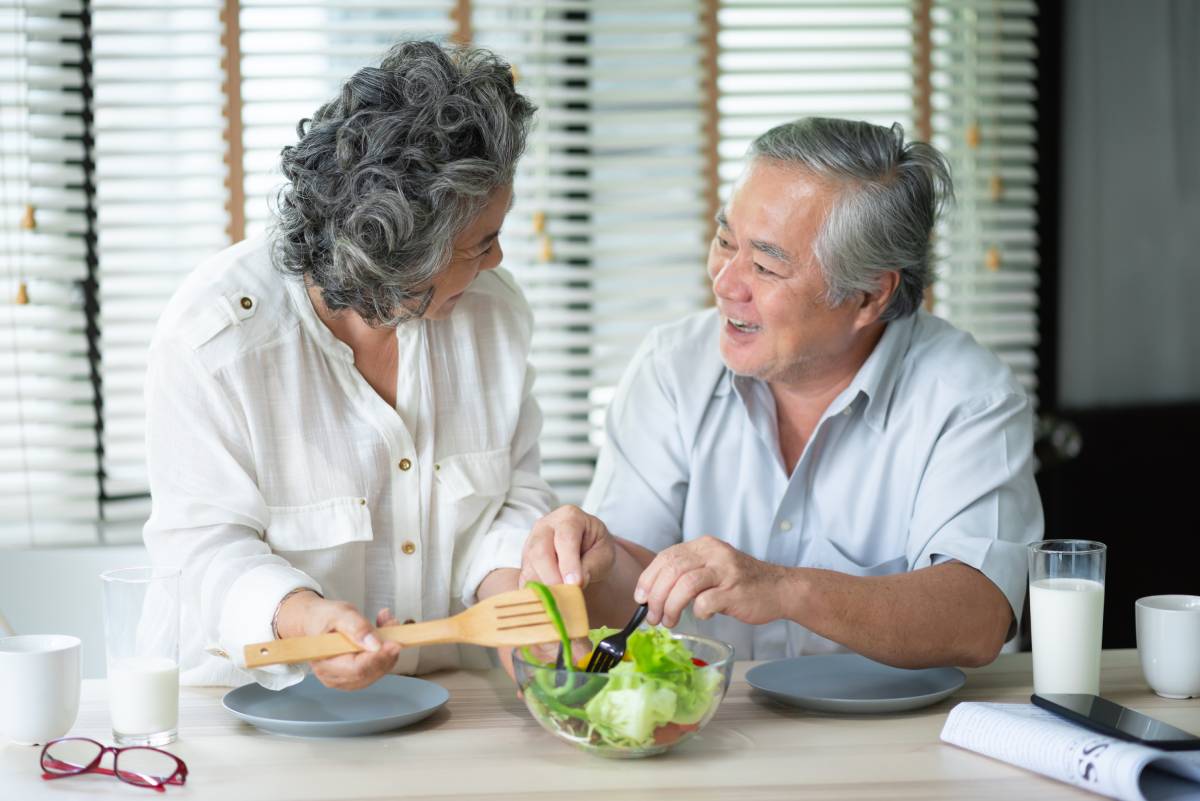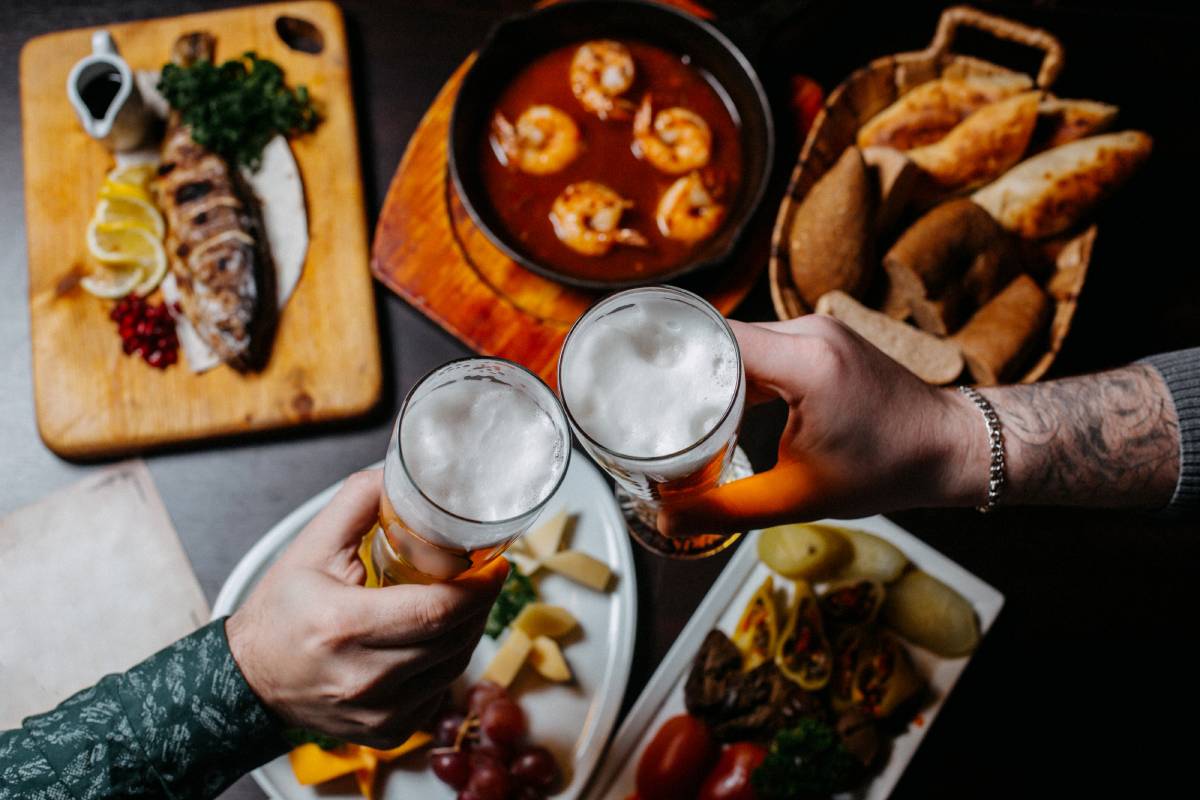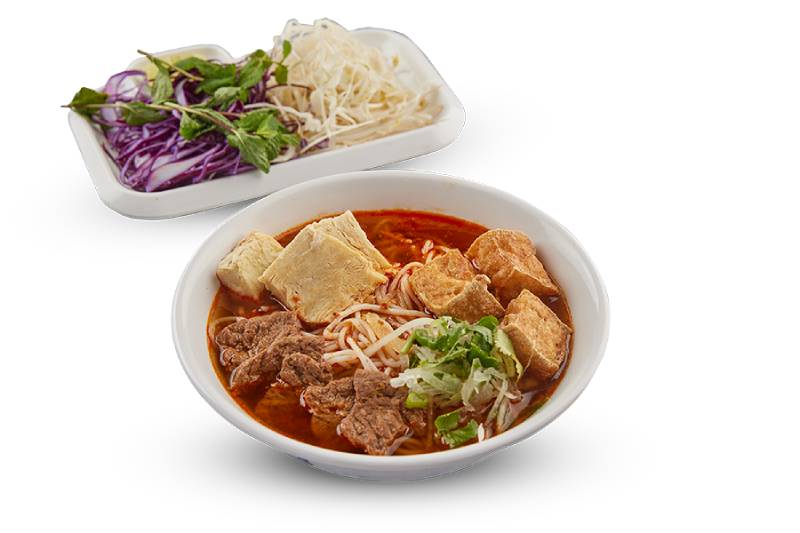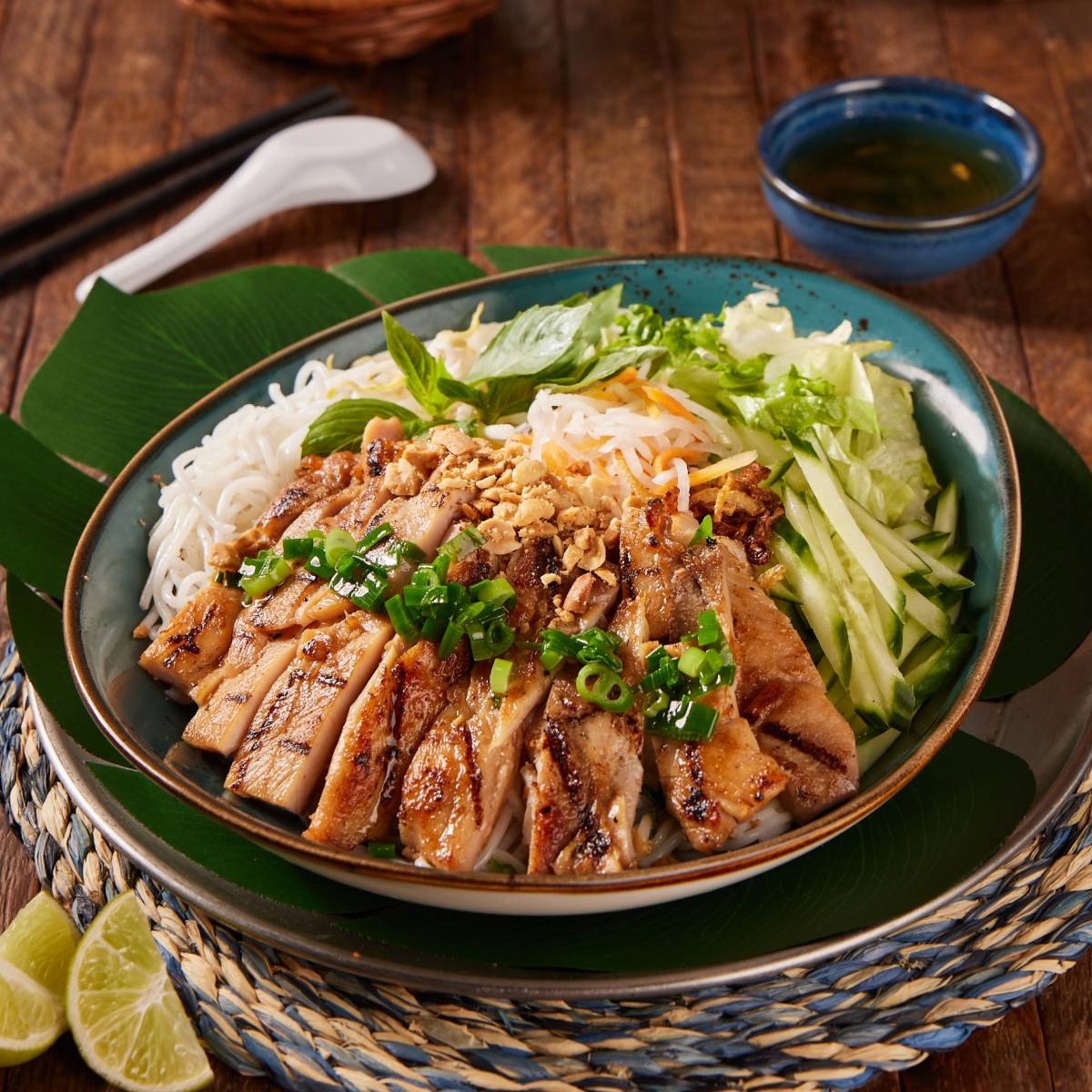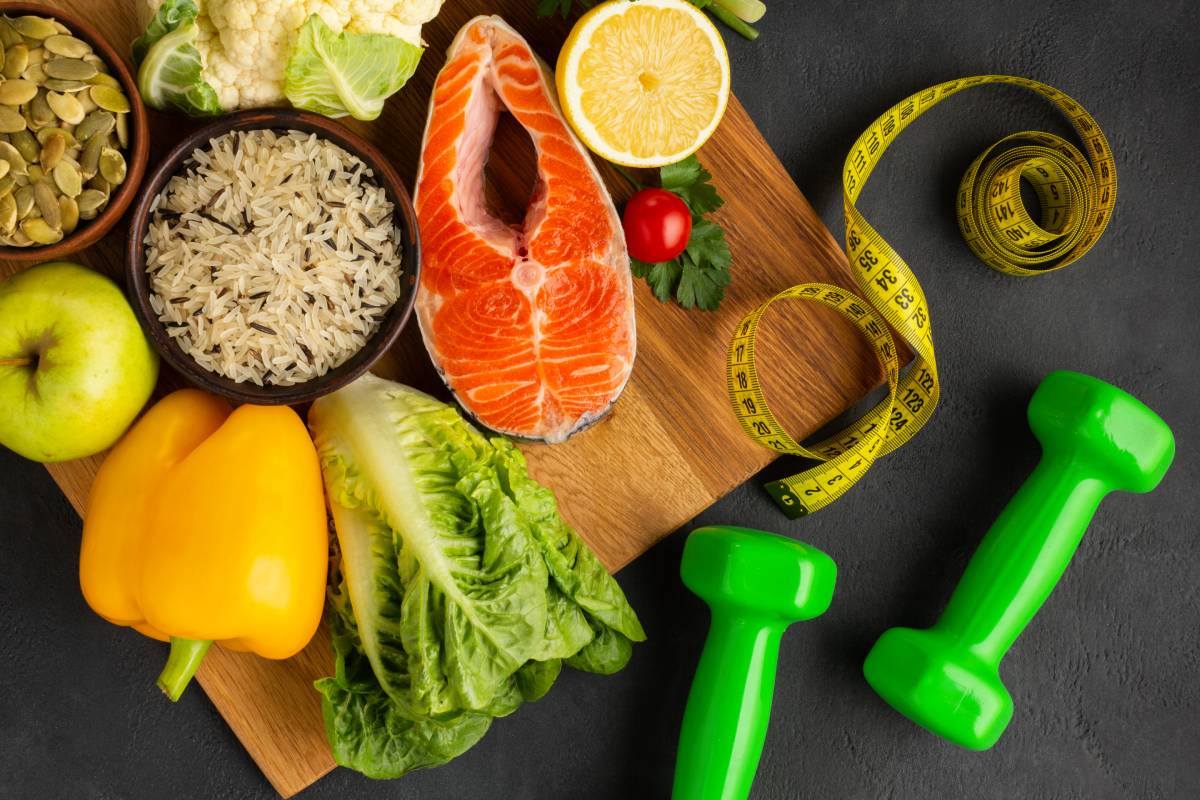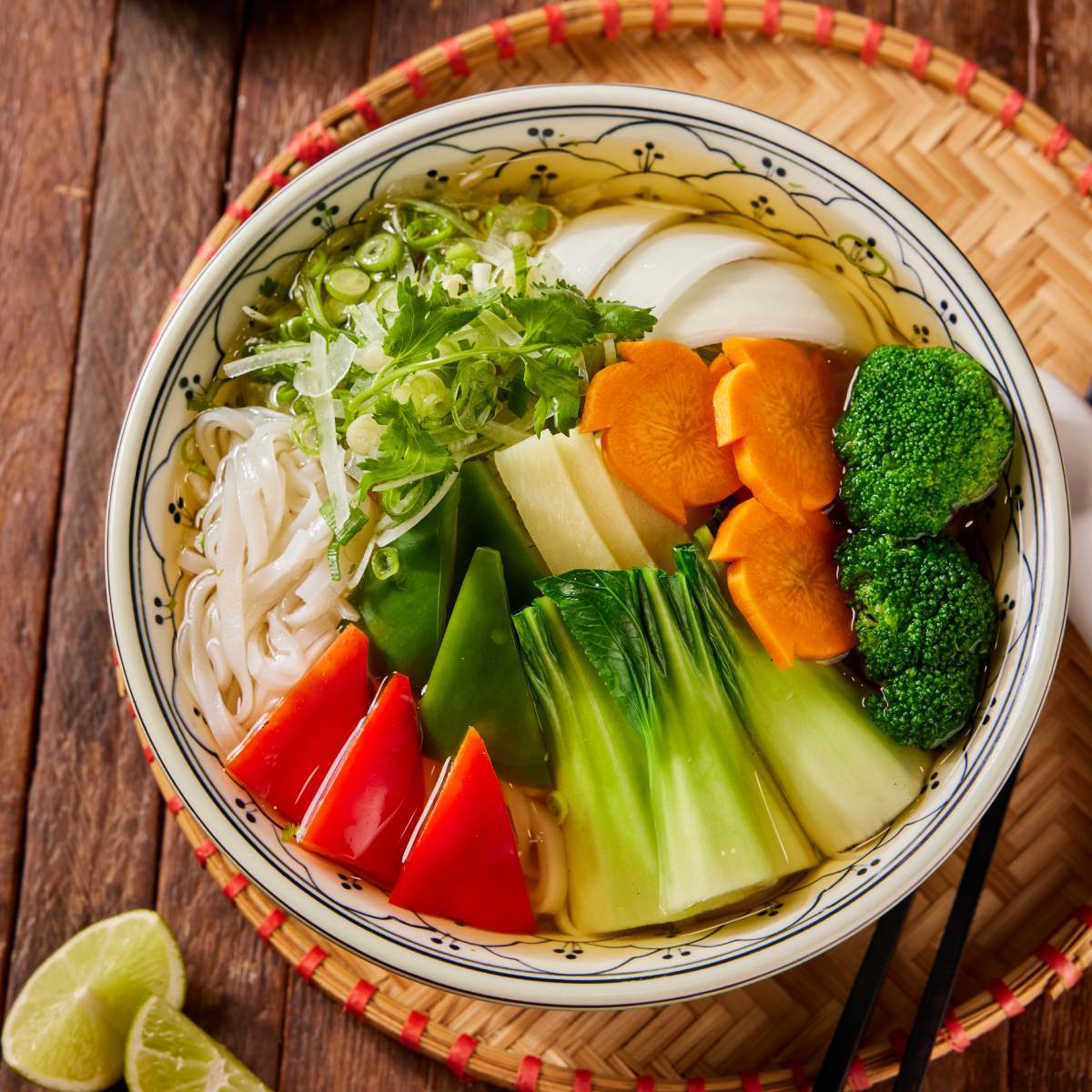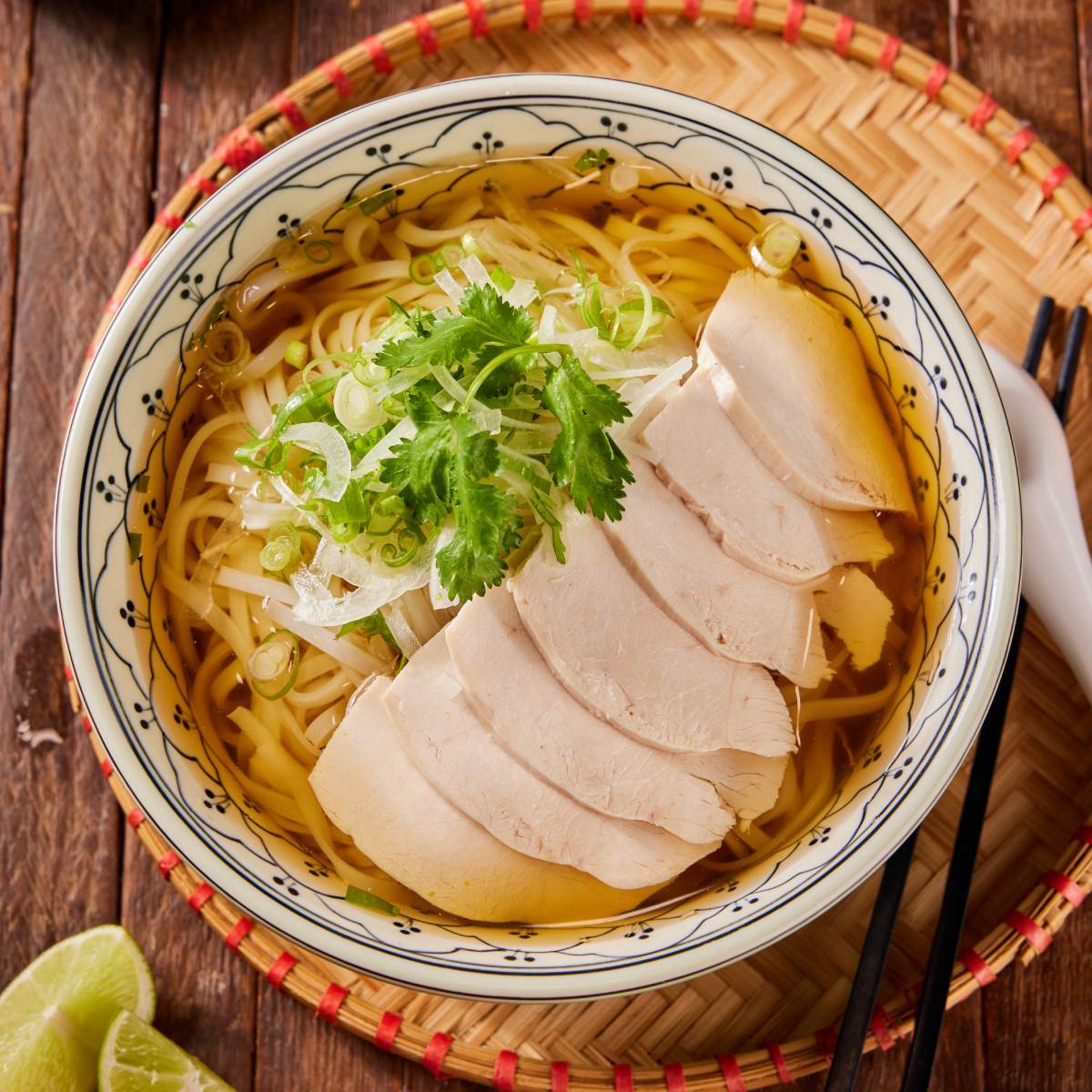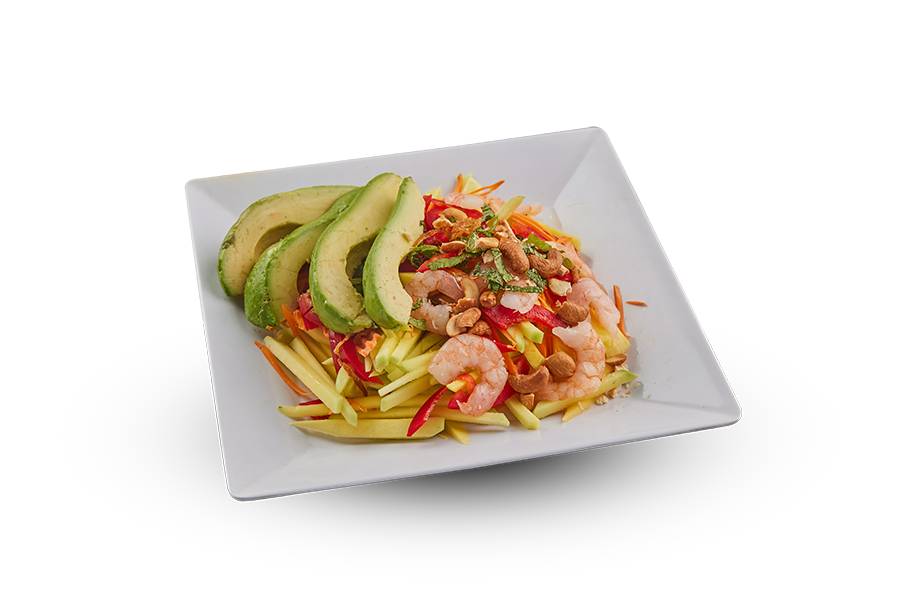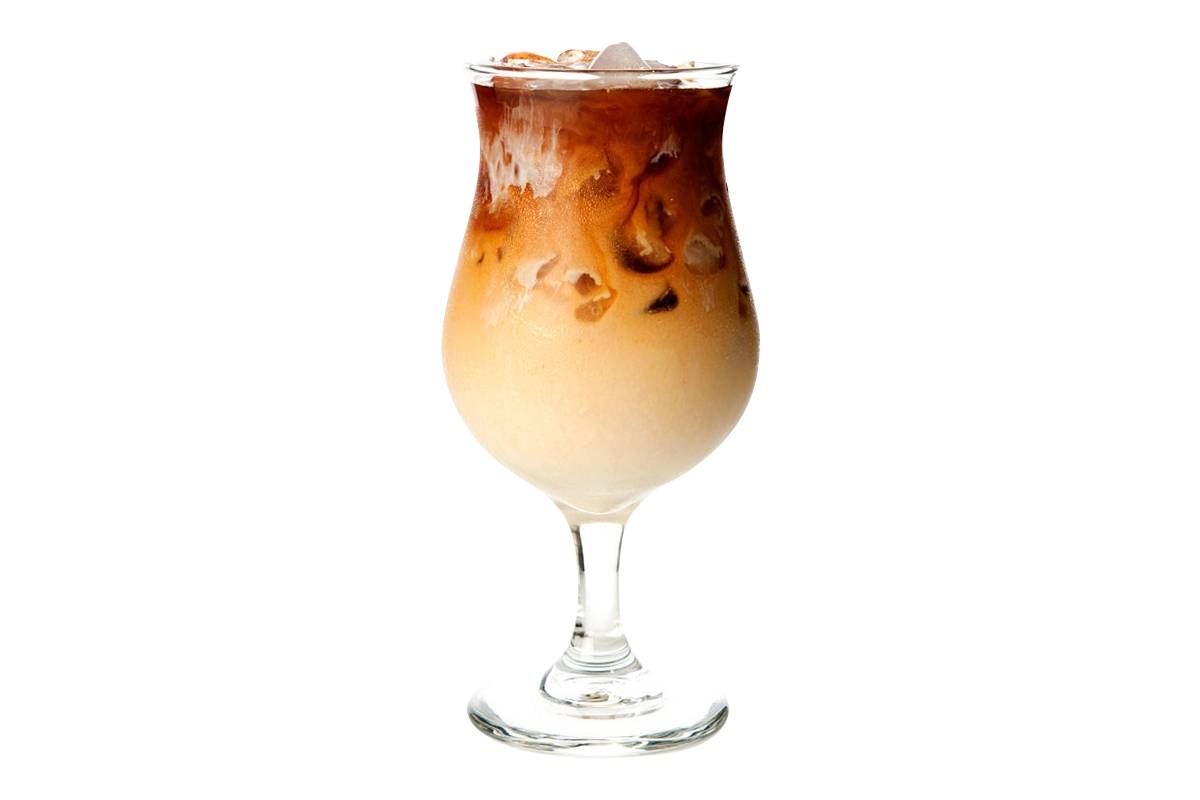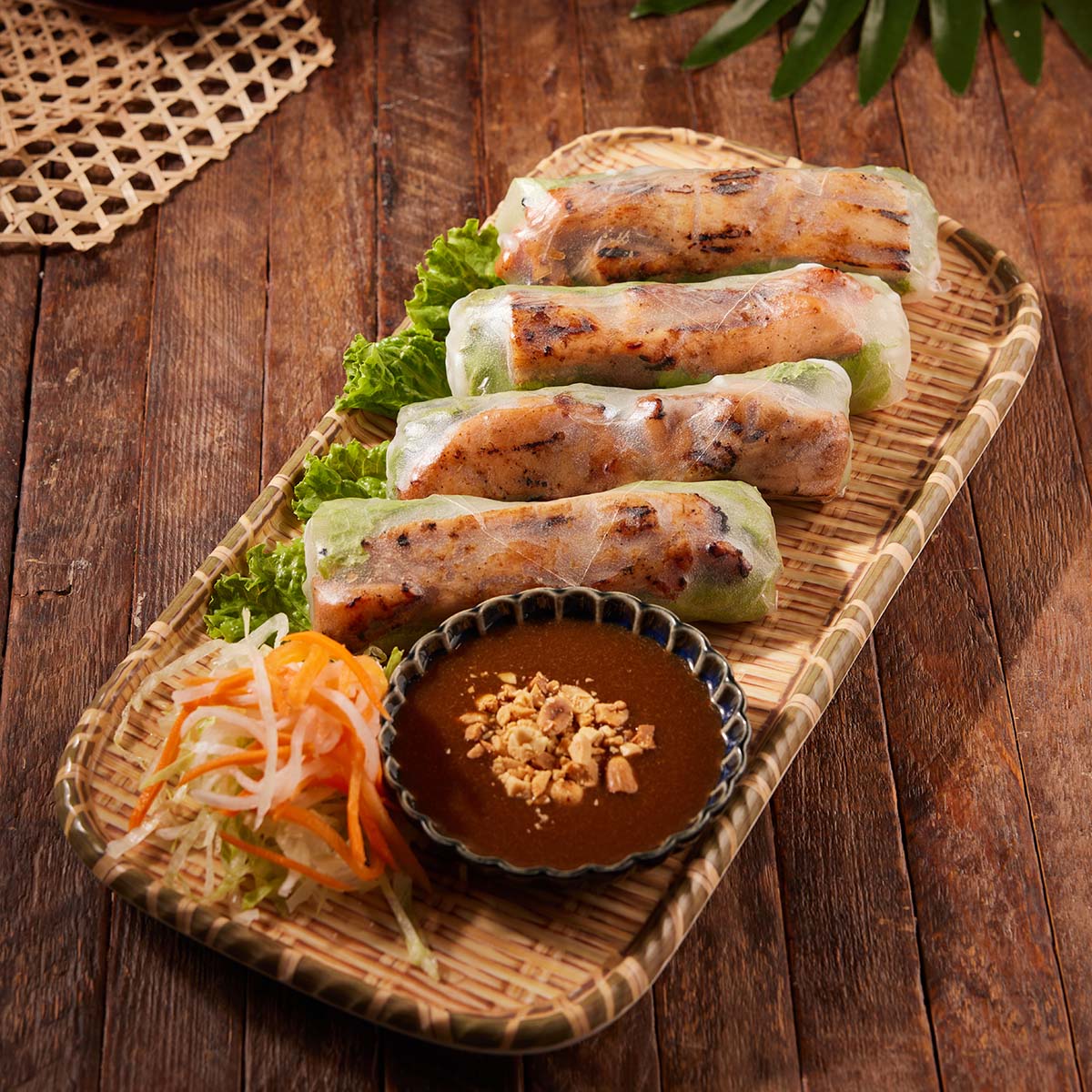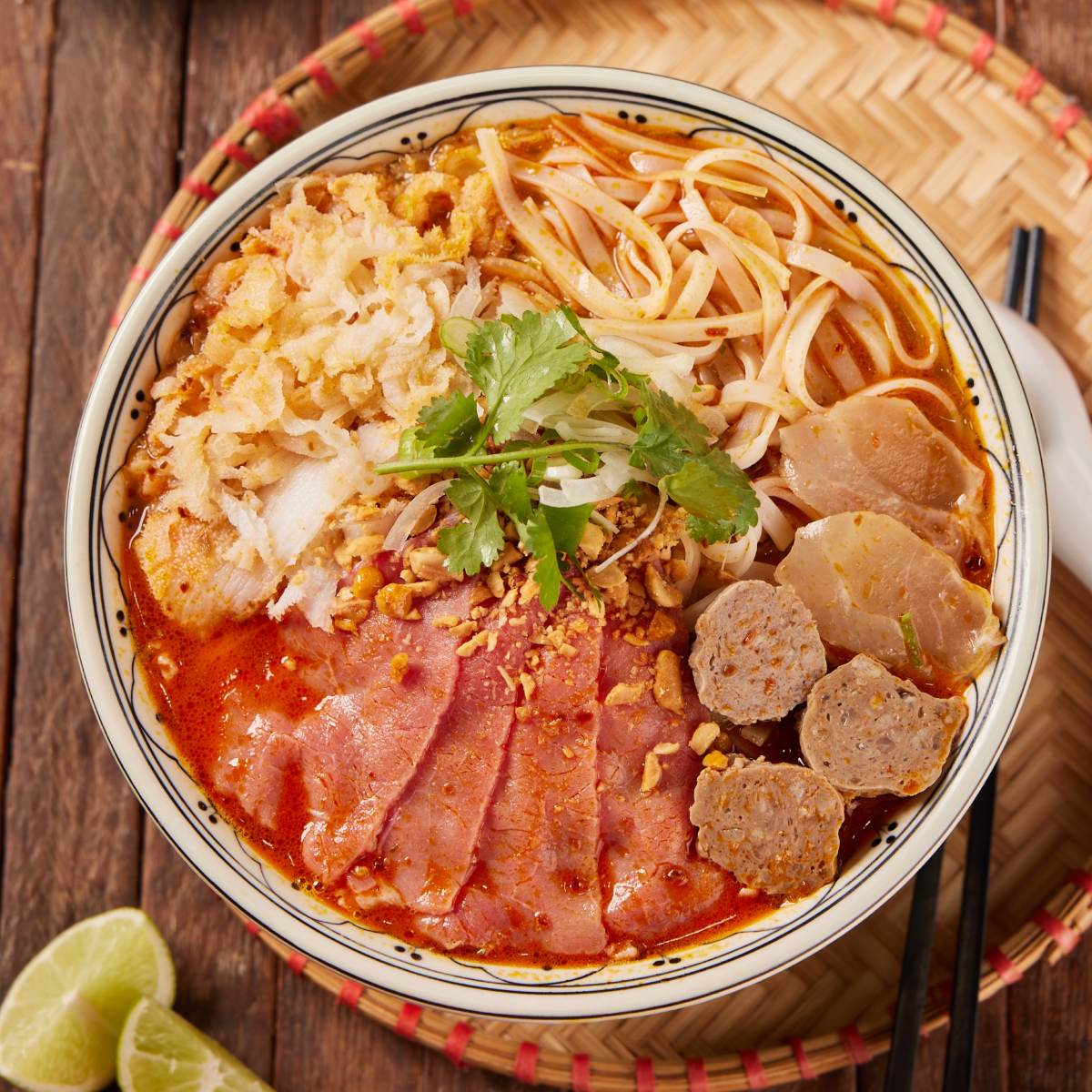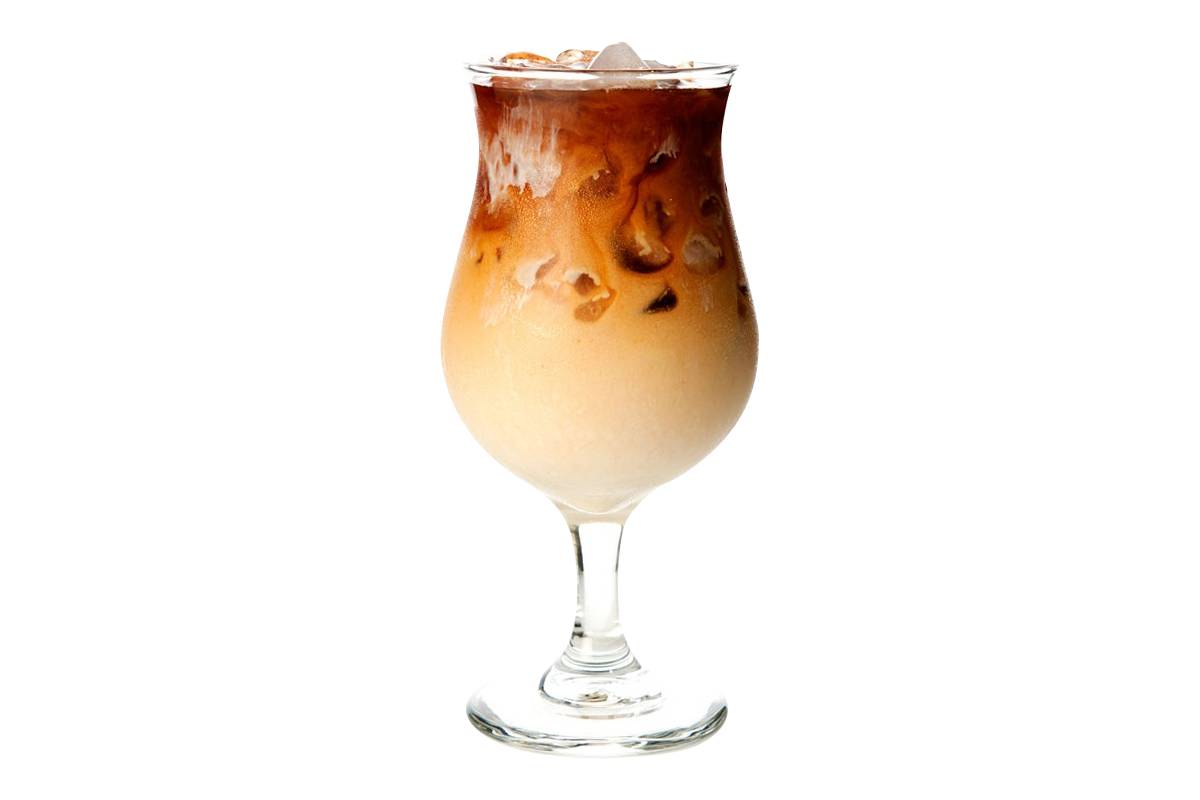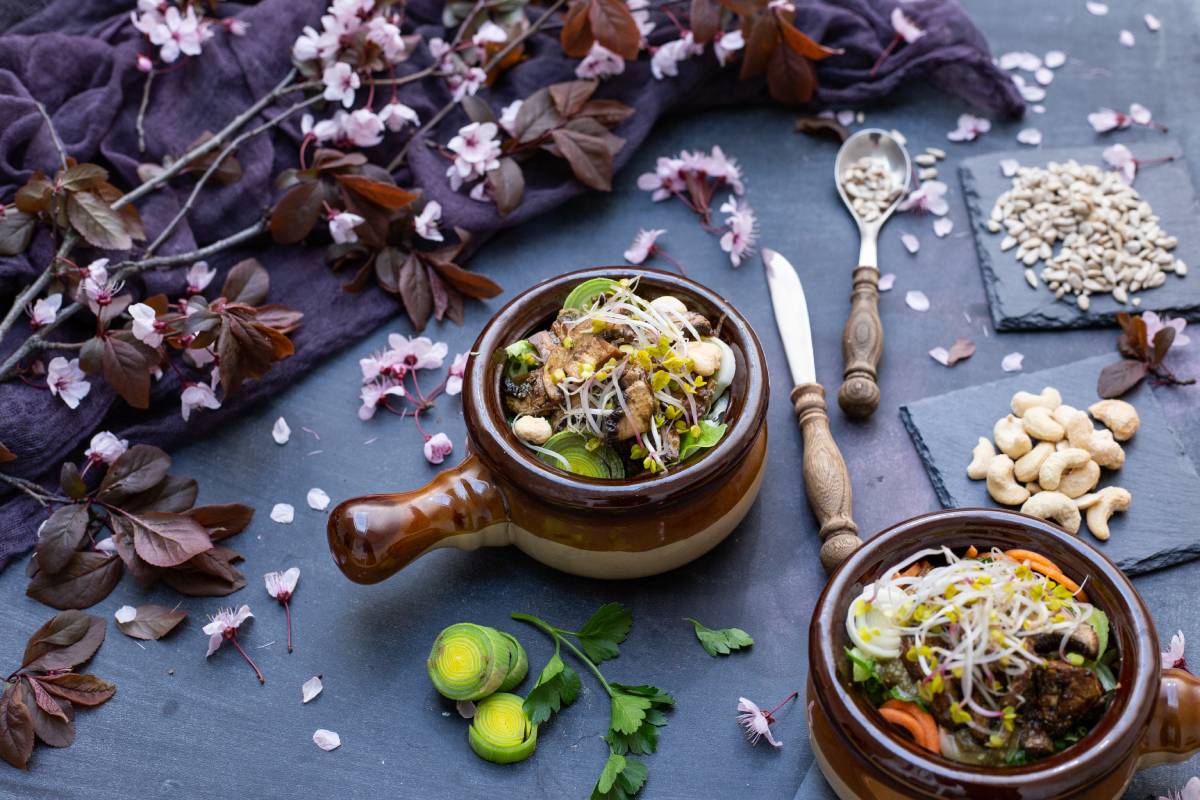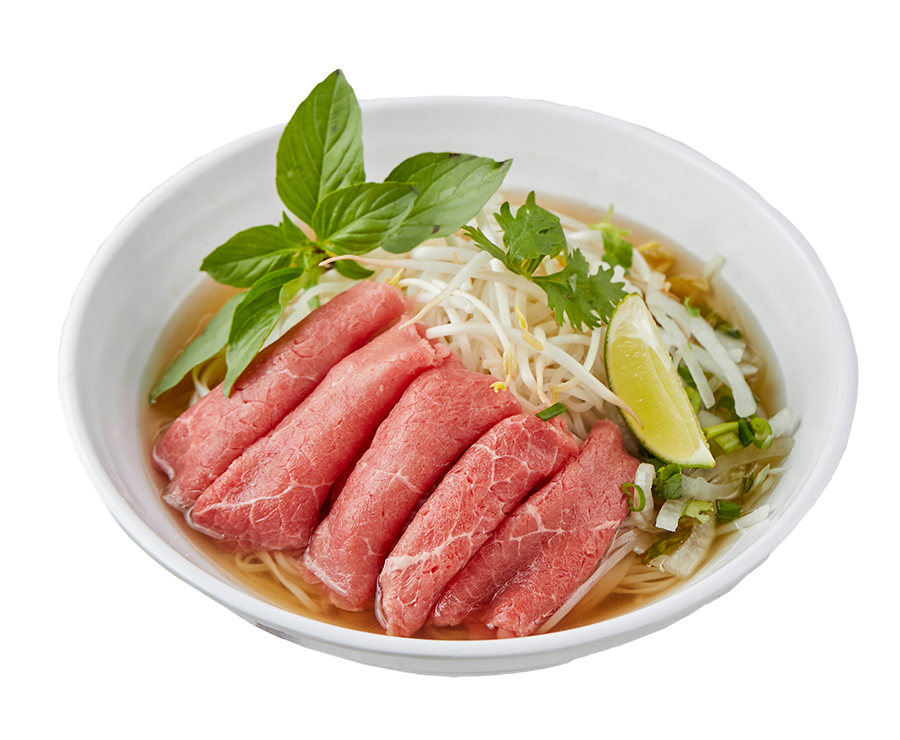What is the Vietnamese Longevity Diet?
The Vietnamese longevity diet refers to the traditional eating patterns commonly found in rural and coastal regions of Vietnam, where people often live into their 80s and 90s with fewer chronic diseases than in Western countries.
This diet is:
- High in vegetables and herbs
- Rich in fermented foods
- Low in red meat and processed ingredients
- Centered on rice and noodles
- Balanced with seafood, tofu, and legumes
- Low in sugar and dairy
- Portion-controlled and mindful
Let’s look more closely at the ingredients and practices that make this diet so beneficial.
-
A Rainbow of Vegetables and Fresh Herbs
Vegetables are the heart of most Vietnamese meals. From sautéed greens to pickled carrots and fresh herb bundles, these plant-based ingredients provide fiber, antioxidants, and essential nutrients.
Common Longevity Vegetables:
- Rau muống (water spinach): Rich in vitamin A, iron, and fiber. Often stir-fried with garlic.
- Bitter melon (khổ qua): Known for its blood-sugar-lowering effects and used in soups or stuffed with meat.
- Lotus root and stem (ngó sen): High in vitamin C and fiber, often used in salads or soups.
- Green papaya: Shredded into salads, it contains enzymes that aid digestion.
Healing Herbs:
- Cilantro, Thai basil, perilla, and mint are eaten fresh and in abundance. These herbs not only add flavor but also offer antimicrobial, anti-inflammatory, and digestion-boosting benefits.
Many meals come with a generous side plate of raw herbs, encouraging people to eat more greens in every bite.
-
Soups and Broths that Heal
Soups play a central role in Vietnamese cuisine. They are warm, light, and easy to digest. Broths are made by simmering bones, vegetables, and herbs for hours, creating a mineral-rich base.
Examples:
- Phở: A slow-cooked beef or chicken noodle soup seasoned with star anise, cinnamon, and cloves. It's topped with herbs and bean sprouts for extra nutrition.
- Canh chua: A sour soup made with tamarind, pineapple, tomatoes, and fish. It is low in fat but full of flavor and nutrients.
- Canh cải: A light mustard green soup often paired with tofu or lean pork.
Broth-based soups hydrate the body, support digestion, and help absorb nutrients more efficiently.
-
Fermented Foods for Gut Health
Fermented foods are essential to the Vietnamese longevity diet. These foods support gut health by providing natural probiotics, which help balance the digestive system and support immune function.
Common Fermented Foods:
- Dưa chua: Pickled mustard greens, typically eaten as a side dish.
- Cà pháo muối: Fermented eggplant that adds tanginess and fiber to meals.
- Nước mắm (fish sauce): A fermented condiment made from anchovies and salt. It's full of umami flavor and is used in nearly every dish.
- Nem chua: A cured, fermented pork roll often eaten in small amounts.
The presence of fermented foods in daily meals helps Vietnamese people maintain strong digestion and gut health well into old age.
-
Rice and Rice Noodles as the Main Carbohydrate
Rice is the staple carbohydrate in Vietnam. It is eaten in many forms—steamed, puffed, rolled, or made into noodles and paper wrappers. Unlike highly processed bread or pasta, rice is typically eaten in its simple, whole form.
Rice-based Longevity Foods:
- Cơm trắng: Plain steamed rice served with most meals.
- Bún: Soft rice noodles served with herbs, grilled meats, and dipping sauces.
- Bánh cuốn: Thin rice crepes stuffed with mushrooms and pork—light and low in oil.
- Bánh tráng: Rice paper used to wrap fresh vegetables, herbs, and proteins, making spring rolls.
These rice-based foods are filling but light, supporting energy without spiking blood sugar.
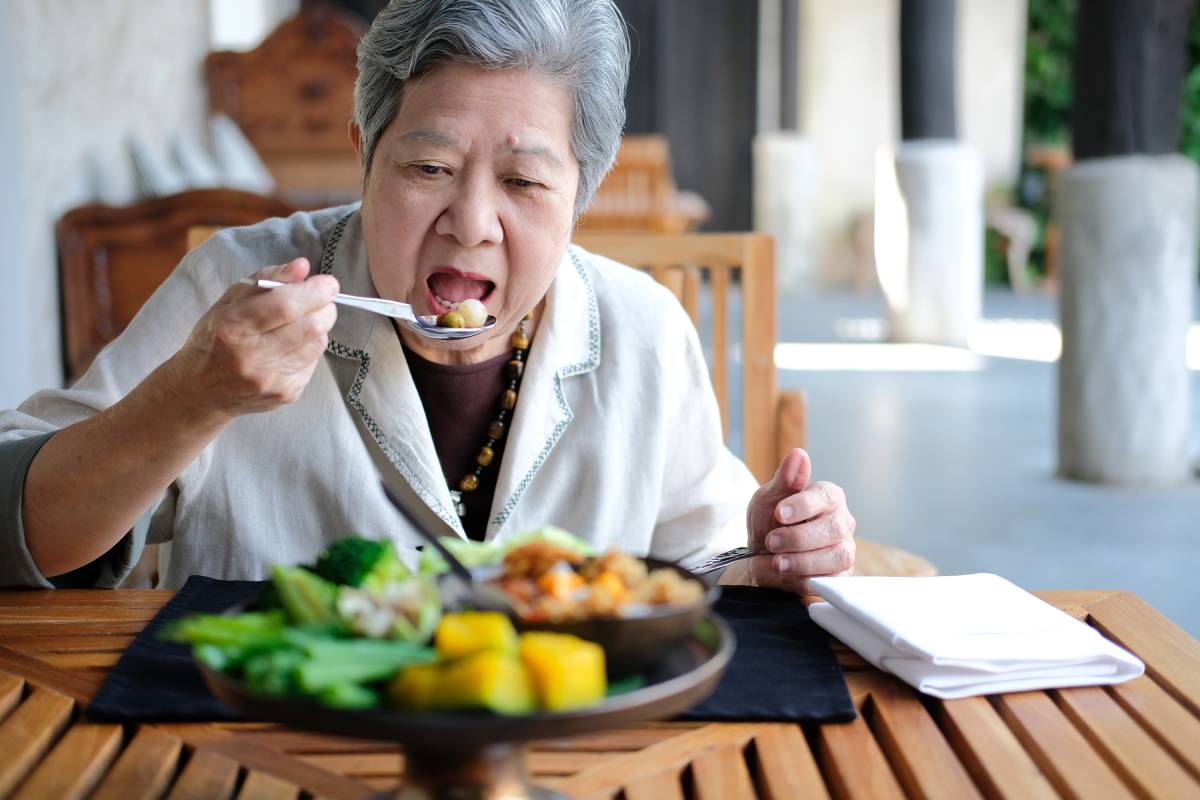
-
Seafood and Plant Proteins Over Red Meat
Vietnamese cuisine relies more on fish, tofu, and legumes than on red meat. This helps lower the risk of heart disease and supports longevity.
Popular Proteins:
- Cá kho tộ: Braised fish cooked in a clay pot with caramelized sauce. It’s rich in omega-3s and served with rice.
- Tofu (đậu hũ): Often fried, steamed, or simmered in tomato sauce. It’s a plant-based protein rich in calcium and iron.
- Shrimp and shellfish: Used in soups, rolls, and stir-fries. They are high in protein but low in saturated fat.
- Mung beans and black beans: Common in desserts, stews, and snacks.
Instead of large cuts of steak or pork, Vietnamese meals focus on modest amounts of protein balanced with plenty of vegetables and carbs.
-
Minimal Use of Dairy and Sugar
Dairy is not a major part of the traditional Vietnamese diet. Calcium comes from fish bones (like in canned sardines), tofu, and leafy greens. Meanwhile, desserts are eaten in moderation and often made with natural ingredients like beans, fruits, and coconut milk.
Traditional Desserts:
- Chè: A sweet soup made with mung beans, lotus seeds, tapioca pearls, and coconut milk.
- Fruit platters: Served at the end of meals with tropical fruits like mango, papaya, lychee, and dragon fruit.
- Bánh chuối: A steamed banana cake made with sticky rice and coconut—naturally sweet and satisfying.
Unlike Western desserts loaded with refined sugar and flour, these options are light, naturally sweet, and portion-controlled.
-
Meals Are Balanced and Mindful
A typical Vietnamese meal is not just about the food—it’s about how the food is eaten. Meals are communal, balanced, and enjoyed slowly.
Characteristics of Vietnamese Eating Habits:
- Small bowls and plates encourage moderation and prevent overeating.
- Chopsticks promote slower eating and mindfulness.
- Family meals support emotional well-being and lower stress, which also promotes longevity.
- Plating style ensures a bit of everything—protein, veggies, rice, and soup—on the table.
This structure helps people feel satisfied without overindulging.
-
Tea and Herbal Infusions Over Sugary Drinks
While soda and sweetened drinks have become more common in urban areas, traditional Vietnamese beverages are light and beneficial.
Healthy and Refreshing Drinks
Vietnamese cuisine is not only known for its delicious flavors, but also for its diverse and healthy drinks. You can enjoy a variety of drinks that are both delicious and good for your health.
1.Green Tea (Trà Xanh)
A staple in Vietnamese culture, green tea is rich in antioxidants and is known for its numerous health benefits, including improved brain function and fat loss. Toronto Pho offers this classic beverage, providing a soothing and healthful option to accompany your meal.
2. Avocado Smoothie
A creamy blend of ripe avocados, milk, and a hint of sweetness, this smoothie is not only delicious but also packed with healthy fats and nutrients. It's a perfect choice for those looking for a nutritious treat.
3. Jackfruit Smoothie
Jackfruit is a tropical fruit known for its sweet flavor and high vitamin content. Blended into a smoothie, it offers a refreshing and healthful beverage option.
4. Brown Sugar Milk Tea
This popular drink combines black tea with brown sugar syrup and milk, creating a sweet and satisfying beverage. It's a delightful option for those looking to indulge in a traditional Vietnamese treat.
5. Va Va Viet – Iced Vietnamese Coffee Slushie
A modern twist on traditional Vietnamese coffee, this slushie version offers a refreshing and energizing experience. It's a must-try for coffee enthusiasts seeking something new.
These drinks not only keep people hydrated but also contribute to overall health and disease prevention.
-
Physical Activity Is Built into the Culture
While not strictly part of the diet, the active lifestyle that accompanies traditional Vietnamese living is a key part of health and longevity.
- Walking to markets
- Riding bicycles or scooters
- Daily housework and farming
- Dancing or group exercises in parks
Combined with the light and healthy diet, this lifestyle promotes strong circulation, joint health, and mobility in older age.
-
Key Takeaways for Adopting the Vietnamese Longevity Diet
You don’t have to move to Vietnam to enjoy the benefits of its traditional diet. Here’s how you can adopt its principles into your daily life:
DO:
- Eat more vegetables and fresh herbs daily.
- Include a warm, nourishing broth-based soup.
- Choose rice and rice noodles over bread or pasta.
- Add tofu and seafood to your weekly meals.
- Snack on fruits and naturally sweetened desserts.
- Add fermented foods like pickled vegetables and yogurt.
- Drink tea instead of soda.
- Practice mindful eating with smaller portions.
AVOID:
- Excess red meat and processed meats.
- Heavy cream-based or cheese-loaded meals.
- Overeating or rushing through meals.
- Sugary beverages and desserts.
Final Thoughts
The Vietnamese longevity diet is not about restriction—it’s about balance, variety, and joy. It shows that health doesn’t have to come from strict rules or expensive superfoods. Instead, it can be built on everyday habits, fresh ingredients, and cultural practices passed down through generations.
Whether you’re looking to prevent disease, improve digestion, or simply feel more energized, the traditional Vietnamese diet offers time-tested wisdom for living a longer, healthier life. Start by making small changes to your plate and noticing how your body and mind respond—you might just unlock your own recipe for longevity.
Here are some delicious food and drinks to try when ordering from PHO restaurants in Toronto:
Spring Roll Vermicelli (Bún Chả Giò)
House Special Beef Noodle Soup (Phở Đặc Biệt)
Shrimp and Chicken Pad Thai (Padthai Tôm Gà)
Pork and Shrimp Roll (Gỏi Cuốn Tôm Thịt)
Combination Fried Rice (Cơm Chiên Dương Châu)
Mango Salad with Shrimp (Gỏi Xoài Tôm)
Rare Beef and Tripe (Phở Tái Sách)

